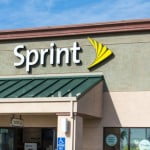
e mail messages are crucial — but sending an e-mail message with a incredible difficulty line is evengreater critical. It’s critical for one to at least one communique or for e mail newsletters.
SendGrid analyzed 18 million emails and distilled 3 important components of what makes a exceptionalemail problem line.
Shorten concern Headers
whilst seven phrases is the maximum not unusual challenge line word duration (14.0 percentage ofsubject lines), 3 phrase situation lines (1.6 percent of situation lines) have the highest engagementrates (21.2 percent, as compared to 17.2 percent ordinary and 15.eight percent for seven wordchallenge strains).
Measuring engagement costs by using wide variety of individual lines tells a similar story: longerconcern strains have decrease engagement quotes.
past 15 characters, each more individual is correlated with a zero.03 percent absolute decrease in engagement fee (or about one percentage in line with 33 characters).
cautiously chosen Buzzwords
Recipients pick sure words over others. problem strains referring to “the day gone by” and “the following day” have higher engagement quotes (20.5 percent and 22.three percentage, respectively) than “today” (11.eight percent).
situation strains with “quickly” have higher engagement quotes (21.9 percent) versus subject tracesrelating to “now.”
e mail problem strains that use the phrase “unfastened” have appreciably decrease engagementcharges (thirteen.1 percent as opposed to 17.2 percent for “free” – unfastened concern strains).
No hyperlinks and Hashtags
challenge lines that contain URLs do poorly, with average engagement quotes of nine.9 percentage (in comparison to 17.2 percentage for situation traces that don’t comprise a URL). subject strains with URLs in them are uncommon (fewer than zero.4 percentage of emails).
subject lines that incorporate #hashtags do poorly, with average engagement fees of 10.five percentagefor concern traces with a single hashtag (in comparison to 17.2 percent for problem strains that do notinclude a #hashtag). thankfully, emails with hashtags in them are rare (fewer than 0.2 percentage of emails).




